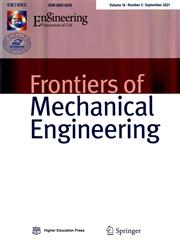大规模火灾漩涡和森林火灾:认识、影响和制定预防方法的必要性
IF 4
2区 工程技术
Q1 ENGINEERING, MECHANICAL
引用次数: 2
摘要
作者是一个由火灾漩涡研究人员组成的团队,他们一直在积极研究漩涡和大规模荒地火灾,通过消防工作直接观察它们,并将理论、尺度建模和数值模拟应用于火灾研究。这个多学科研究背景团队之前在实验室中进行了规模模型实验,以重建危险的大规模火灾,然后进行了数值模拟,并开发了基础理论,将这些发现转化为对燃烧科学和流体动力学的基本理解。这篇文章结合了对最新实验、理论、数值建模和人工智能的综述,以及两个案例研究,旨在通过热力学、化学动力学、流体动力学、设计和实际消防经验的知识,解决一些安全问题,提高人们对大规模火灾漩涡和森林火灾的认识,提供了应该填补的空白和每个领域未来要进行的研究,以及对大规模火灾事件的重要新观察和见解。我们相信,这一及时的主题不仅引起了火灾研究界的兴趣,也引起了普通读者的兴趣,因为大规模森林火灾和火灾漩涡的频率和强度都有所增加,这可能是由于持续的全球变暖趋势和人类引起的燃料变化。每个章节和案例研究都是由一到两名研究人员根据他们的专业领域撰写的,这使他们能够批判性地回顾他们在大规模火灾旋风和森林火灾方面取得的进展。介绍了对历史上关东大地震产生的Hifukusho Ato火旋(HAFW)和最近森林消防工作中观察到的缓慢旋转的重要观测和见解。第一个案例研究发生在1923年9月1日的东京市中心,起因是关东大地震,该地震在15分钟内造成38000多人死亡。第二个案例研究讨论了在最近的森林大火中观察到的大规模缓慢旋转,这可能是有经验的消防员伤亡的原因。本文章由计算机程序翻译,如有差异,请以英文原文为准。
Large-scale fire whirl and forest fire disasters: Awareness, implications, and the need for developing preventative methods
The authors are a team of fire whirl researchers who have been actively studying whirls and large-scale wildland fires by directly observing them through fire-fighting efforts and applying theory, scale modeling, and numerical simulations in fire research. This multidisciplinary research-background team previously conducted scale model experiments to reconstruct hazardous large-scale fires in the laboratory, then conducted numerical simulations and developed fundamental theories to translate these findings into a basic understanding of combustion science and fluid dynamics. This article, a mix of reviews of the state of art experiments, theories, numerical modeling and artificial intelligence, and two case studies, is intended to address some safety concerns and raise awareness of large-scale fire whirls and forest fires with knowledge of thermodynamics, chemical kinetics, fluid dynamics, design, and practical fire-fighting experience, offering gaps that should be filled and future research to be conducted in each field, and crucial new observations and insights on large-scale fire incidents. We believe, this timely topic is of interest not only to fire research community but also to general readers, as the frequency and intensity of large-scale forest fires and fire whirls have increased, possibly due to the continuing global warming trend and human-induced changes in fuels. Each section and case study was written by one or two individual researchers based on their field of expertise which allows them to critically review progress made in their section of large-scale fire-whirls and forest-fires. Crucial observations and insights on the historical Great-Kanto-Earthquake-generated Hifukusho-Ato Fire-whirl (HAFW) and the slow rotations observed during recent forest firefighting efforts are presented. The first case study occurred in downtown Tokyo on 1 September 1923, as a result of the Great-Kanto-Earthquake, which claimed over 38,000 deaths within 15 min. The second case study discusses large-scale slow rotations observed during recent forest fires, which might had been responsible for the injuries and deaths of experienced firefighters.
求助全文
通过发布文献求助,成功后即可免费获取论文全文。
去求助
来源期刊

Frontiers of Mechanical Engineering
Engineering-Mechanical Engineering
CiteScore
7.20
自引率
6.70%
发文量
731
期刊介绍:
Frontiers of Mechanical Engineering is an international peer-reviewed academic journal sponsored by the Ministry of Education of China. The journal seeks to provide a forum for a broad blend of high-quality academic papers in order to promote rapid communication and exchange between researchers, scientists, and engineers in the field of mechanical engineering. The journal publishes original research articles, review articles and feature articles.
 求助内容:
求助内容: 应助结果提醒方式:
应助结果提醒方式:


